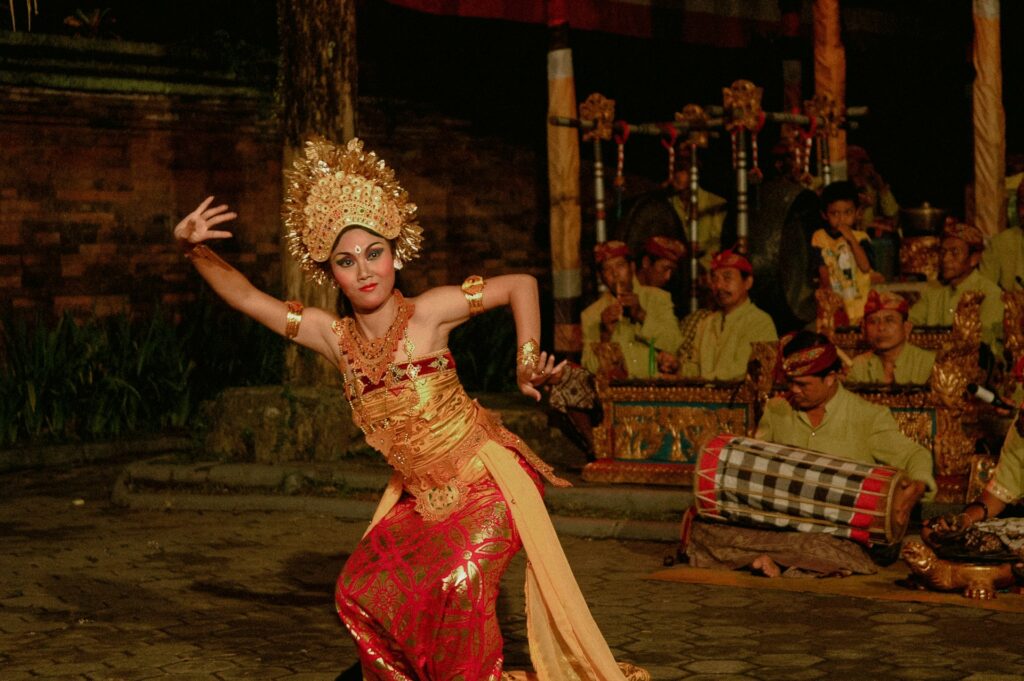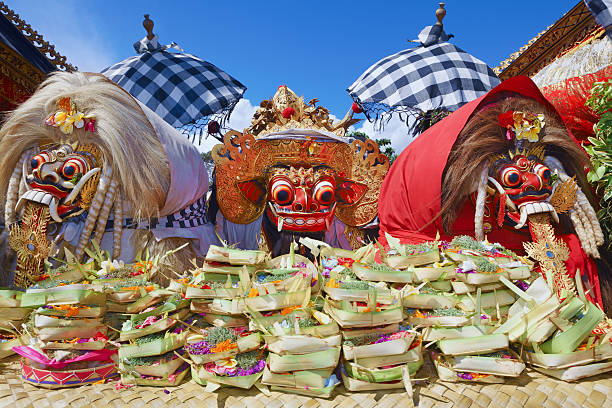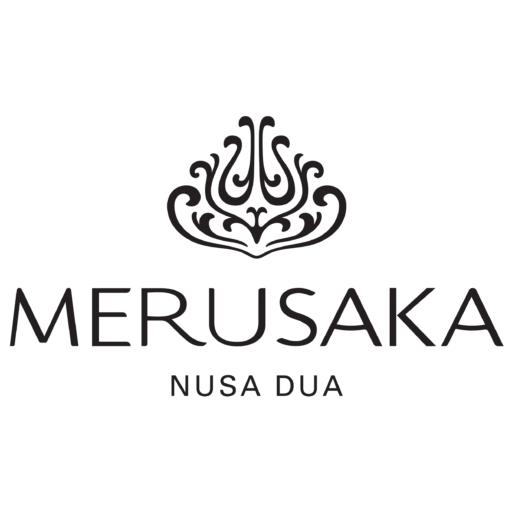Discover Balinese dance! The art of Balinese dance beautifully shows the island’s spirit, mixing mythology, spirituality, and graceful movement. More than just a show, dance is a lively tradition here. You’ll see it in temple events, performance places, and even village gatherings, telling stories and showing devotion through movement, costumes, and Gamelan music.
Understanding the dances can make watching them even better. As your friendly team at Merusaka Nusa Dua, we want to introduce you to three special Balinese dances: Legong, Barong & Rangda, and Kecak. Let’s see their stories and importance.
More Than Movement: The Heart of Balinese Dance
Before looking at dances, let’s understand some common parts:
- A Spiritual Connection: Many Balinese dances, especially in temples (Wali and Bebali), are offerings or part of events. They connect with the divine, please gods, and keep balance, like the Tri Hita Karana idea. Even audience dances (Balih-balihan) often have spiritual meanings.
- Storytelling Through Movement: Most dances tell a story. These often come from Hindu stories (Ramayana and Mahabharata) or old Balinese tales about gods, demons, kings, queens, and animals.
- Detailed & Symbolic Language: Balinese dance uses special movements. Each gesture means something. Notice the eye movements (seledet), hand movements (mudra), and body positions. These show character, emotion, and the story.
- Beautiful Costumes & Makeup: Dancers wear amazing costumes with silk, gold details, tall headdresses with flowers, and symbols. Makeup also shows the character (like a hero or a demon).
- The Important Gamelan: The Gamelan music is part of Balinese dance. This group of metal instruments, gongs, and drums sets the rhythm and drama, talking with the dancers. Different Gamelan types (like Gong Kebyar) go with different dances.
The Graceful Legong Keraton
Legong Keraton (Palace Legong) is a beautiful and elegant classical dance.
- Royal Beginnings: Legong grew in Bali’s royal courts. It’s a high point of Balinese art.
- Detailed Features: Legong needs much skill and training from a young age. Key parts include:
- Fast footwork.
- Detailed hand and finger movements (mudra).
- Smooth body movements.
- Expressive eye movements (seledet).
- Dancers wear beautiful gold fabric, flower headdresses that move, and often use fans (kipas) in the dance.
- Stories of Royalty and Myth: Legong dances often tell stories from Javanese-Balinese epics (like Panji) or local tales. Legong Lasem is about a king, a princess, and a bird. The dance usually has two main female dancers (Legongs) and a helper (Condong).
- Atmosphere: Watching Legong is captivating, showing beauty, elegance, and artistry.

Legong dance is a classical dance from Bali which is characterized by flexible, supple movements and is tied to gamelan music.
The Battle of Good and Evil: Barong & Rangda Dance
This dramatic dance shows the fight between good and evil.
- Meet the Characters:
- Barong Ket: The main good character, a lion-like creature. He protects villages and represents goodness. Two dancers work together in the costume. There are also other Barong types (like Barong Bangkal).
- Rangda: The scary bad character, a demon queen linked to black magic. She has a frightening mask with big eyes and long teeth.
- The Story: Rangda tries to harm a village. The villagers ask for Barong’s help. A fight happens. Often, Barong’s followers in a trance try to stab themselves with knives (keris) but are protected by Barong’s magic, showing good’s power over evil.
- The Balance: The fight between Barong and Rangda usually doesn’t have a winner. It shows the Balinese belief in the balance of good and bad in the world.
- Atmosphere: The Barong dance is exciting, with drama, myth, comedy (Barong can be funny), and amazing masks.

The Barong Ket, a symbol of protection and goodness.
The Powerful Kecak (The Monkey Chant)
Kecak is a famous Balinese dance with vocal music and often a sunset background (like at Uluwatu).
- The Vocal Gamelan: Kecak doesn’t use instruments. The music comes from a large group of men (50-100 or more) chanting “cak-cak-cak-cak” in circles.
- The Hypnotic Chant: The men make complex rhythms with their voices, like a Gamelan, and also represent the monkey army (Vanara) from the Ramayana story. It’s a powerful sound.
- The Ramayana Story: Dancers in the middle act out parts of the Ramayana. It’s usually about Prince Rama rescuing Princess Sita from the demon king Rahwana. The monkey general Hanuman helps Rama, and the chanting men are his troops.
- The Exciting Fire Dance: Many Kecak shows, like at Uluwatu, include a fire dance. Hanuman might be captured and set on fire but escapes, a thrilling sight, especially at sunset.
- Atmosphere: Kecak is energetic and captivating. The chanting, story, fire (if there), and setting make a unique experience.
Where to See Balinese Dance
Seeing these dances is a great part of visiting Bali. Here’s where you can find them:
- Performance Places: Many places, especially in Ubud and South Bali, have regular shows for visitors. Ubud Palace often has Legong or Barong. Cultural parks like GWK sometimes have dances.
- Temple Events (Odalan): Dance is important in Balinese temple festivals. Seeing a dance in this sacred setting is special. Schedules depend on the temple. Be respectful if you watch.
- Resort Cultural Nights: Some hotels, maybe Merusaka sometimes, have cultural nights with dance performances.
- Getting Information & Tickets: Show times can change. Ask local people or our helpful team for current schedules and ticket help.
Conclusion: A Wonderful Cultural Experience
Balinese dance is a rich and meaningful part of the island’s culture. Legong’s grace, Barong’s drama, and Kecak’s power offer unique experiences.
We encourage you to see a performance during your Bali trip. It’s more than just fun; it connects you to the island’s stories and traditions. It’s an experience you’ll remember.
Enjoy the magic of Balinese dance!



